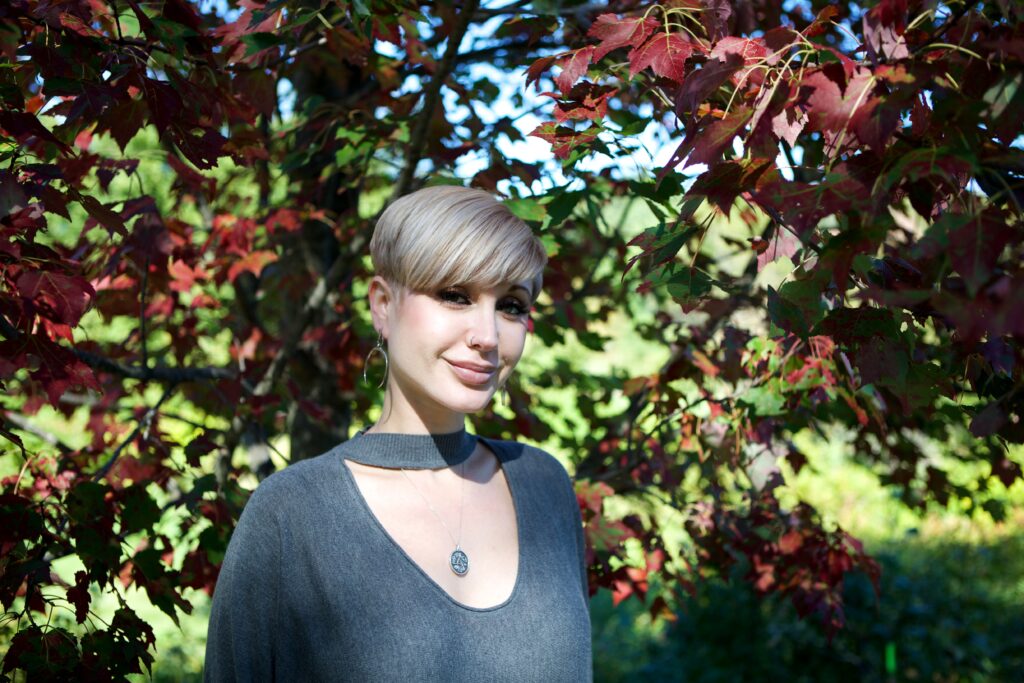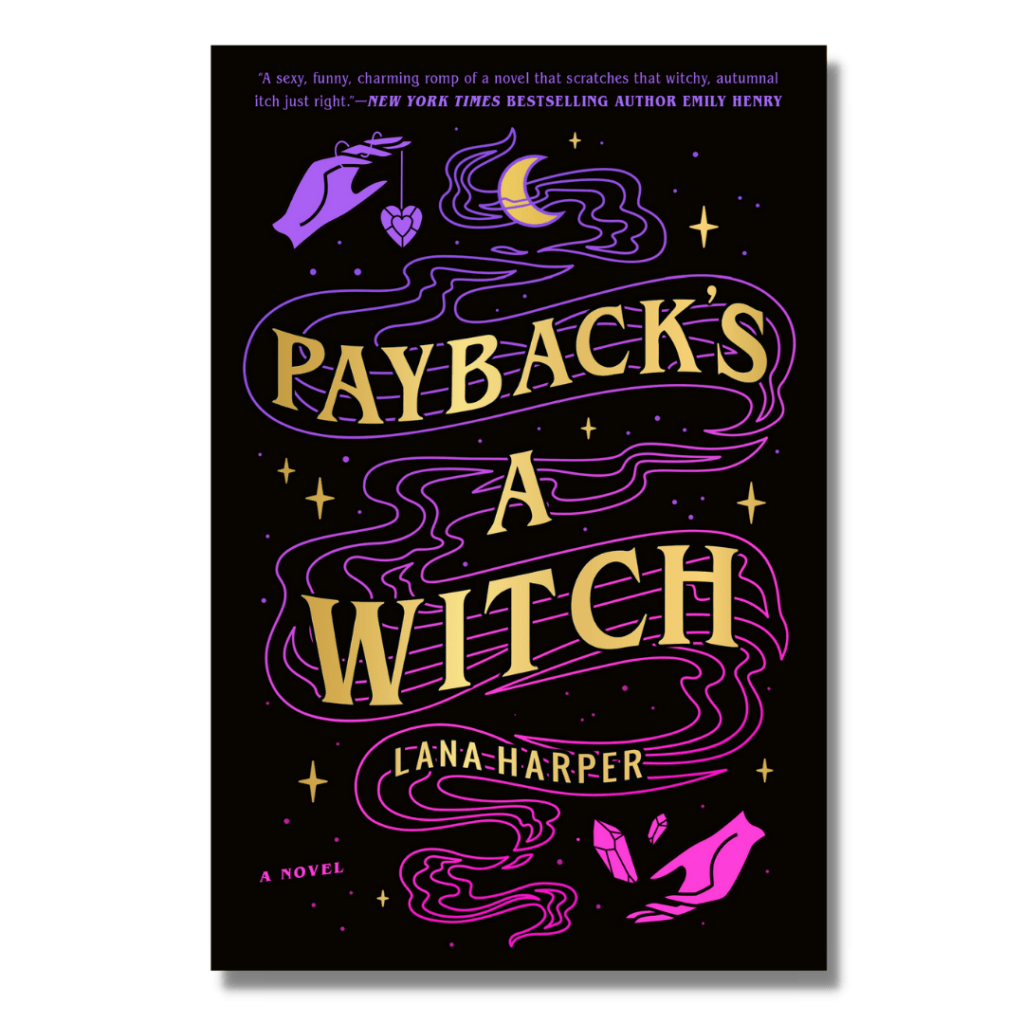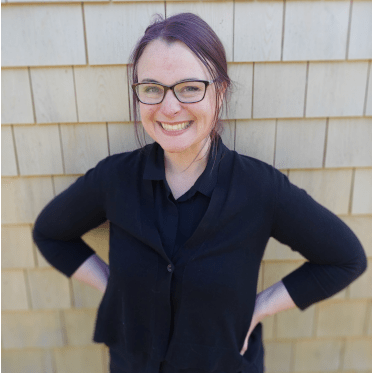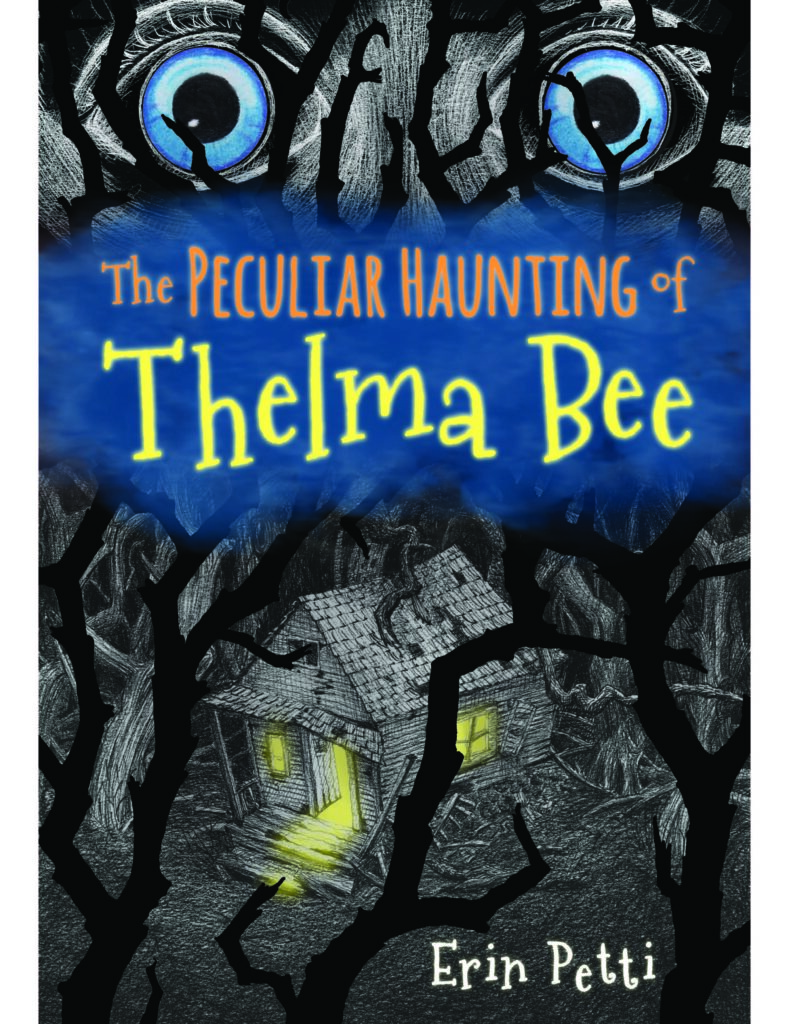Alumnae Authors on Witchy Rom Coms, the ‘Blood Ceiling,’ and Middle School Hauntings
When it comes to getting recognition for creating horror stories, are women in for tricks or treats? Three alumnae working in the scary space have different perspectives on the matter.
Kay Hanifen ’20 examined the history of women in horror movies in her editorial “The Blood Ceiling: Women in Horror and the Fight for Recognition Behind the Camera” for Ghouls Magazine. Hanifen initially wrote the article for a writing class with Delia Cabe, senior affiliated faculty.
“From an audience perspective, horror is one of the most female-centric genres out there,” said Hanifen, whose short stories have been published in several anthologies. “It’s the only genre where women have more screen time than men by a thin margin. And more dialogue.”

At the age of 18, Mary Shelley created science fiction with Frankenstein, and Ann Radcliffe was a pioneer of the Gothic romance genre, but that’s horror with a pen (or quill). Hanifen, who’s also written horror-themed articles for Screen Rant such as “The Classic Universal Vampire Who Deserves a Reboot (That Isn’t Dracula),” wanted to look behind the camera.
Among numerous interviews, Hanifen spoke with Emily Zarka, who runs the PBS web series Monstrum, and coined the term “blood ceiling,” which plays off the glass ceiling preventing women from advancing.
“A lot of it is recognition. As a culture, women get swept under the rug in favor of men,” said Hanifen. Citing the cult classic TV show The Twilight Zone, Hanifen points out that only one out of 156 episodes was directed by a woman.
A more recent example is the 2021 reboot of Candyman, directed and co-written by Nia DaCosta, but billed as Jordan Peele’s movie. Not to minimize the contribution or popularity of Peele, who co-produced and co-wrote the movie, Hanifen found it insulting that DaCosta, a woman of color, was not highlighted more by media and marketing.
Men getting more opportunities in horror writing has led to more male heroes and antagonists. Which is not to say there aren’t heroines and female baddies. Hanifen points out Nancy in the original A Nightmare on Elm Street and slasher Mrs. Voorhees in the first Friday the 13th.
“I think it’s improving. We do see a lot more women in directing in general. There’s a cultural stereotype that women don’t really like horror, which is not at all true,” said Hanifen.
Harper’s Witches and Historical Horror
Lana Harper’s (MA, ’10) newly released book, Payback’s a Witch, tells a different story. As a Young Adult novelist, she writes about modern-day witches and historical horror.

Payback’s a Witch, came about from her editor recognizing the emerging Young Adults witchy rom com genre. Harper was asked to write a novel that came out of a brainstorming session with her agent. The book was so popular that an auction between seven different publishing houses ensued (Penguin Random House won).
The book was released earlier this month and quickly became a New York Times best seller, and an Editors’ Pick for Best Romance on Amazon.
“It’s a witch book with romance in it,” said Harper.
November 9: Hear Lana Harper read from her latest work
Her previous book, Blood Countess, was about Elizabeth Bathory, the first female serial killer. “She killed a lot of women, and then she was bricked up in a tower and left to die,” said Harper.
Harper said she always writes about women.

“I think there’s a greater relatability. I’m writing emotional womens’ fiction against a paranormal setting. It’s not just a witch coming back to her hometown. It’s not just a romance. It’s a transformative coming-of-age journey for a 25- or 26-year old,” said Harper. “I find it more interesting to write a female character. Maybe because I am one.”
Harper said that the paranormal romance genre, and romantic comedies in general, are dominated by women authors. Harper agrees with Hanifen that there’s a belief that women don’t like horror. She added there’s also a perception that only literary fiction has worth and the rest is pulp — trashy and not worth exploring.
“It’s very condescending to women,” added Harper. She said that notion is changing, pointing to more creative writing classes focused on genre fiction like Emerson’s Popular Fiction Writing and Publishing MFA.
Scary Tales Appeal to Younger Readers, Too

Erin Petti ‘03 writes middle grade-age books. Her book, The Peculiar Haunting of Thelma Bee, is about an 11-year old girl.
“She’s an aspiring scientist and explorer of the world. Her mother is a cryptozoologist, a kind of pseudo-science,” said Petti, membership coordinator for WERS.
Personally, Petti said she’s actually a scaredy cat, but writing scary stories is a way for readers to grapple with death, mortality, love, and the loss of life.
“Spirits and ghosts are conduits for that conversation that allows [the] honesty to talk about things that matter,” said Petti. “For me, the idea of imbuing imagination and seeing past what we can see is a good place to write about it.”

Petti said her preferred genre is a very welcoming place for female writers.
“Just from an editorial direction, on down to librarians and first-grade teachers, there are so many more women in that space,” said Petti. “I’m thinking about gatekeepers. I think about sixth-grade teachers and librarians when you’re talking about children’s literature. Those are not traditionally male spaces. A lot of people getting literature into the hands of children are women.”
Categories